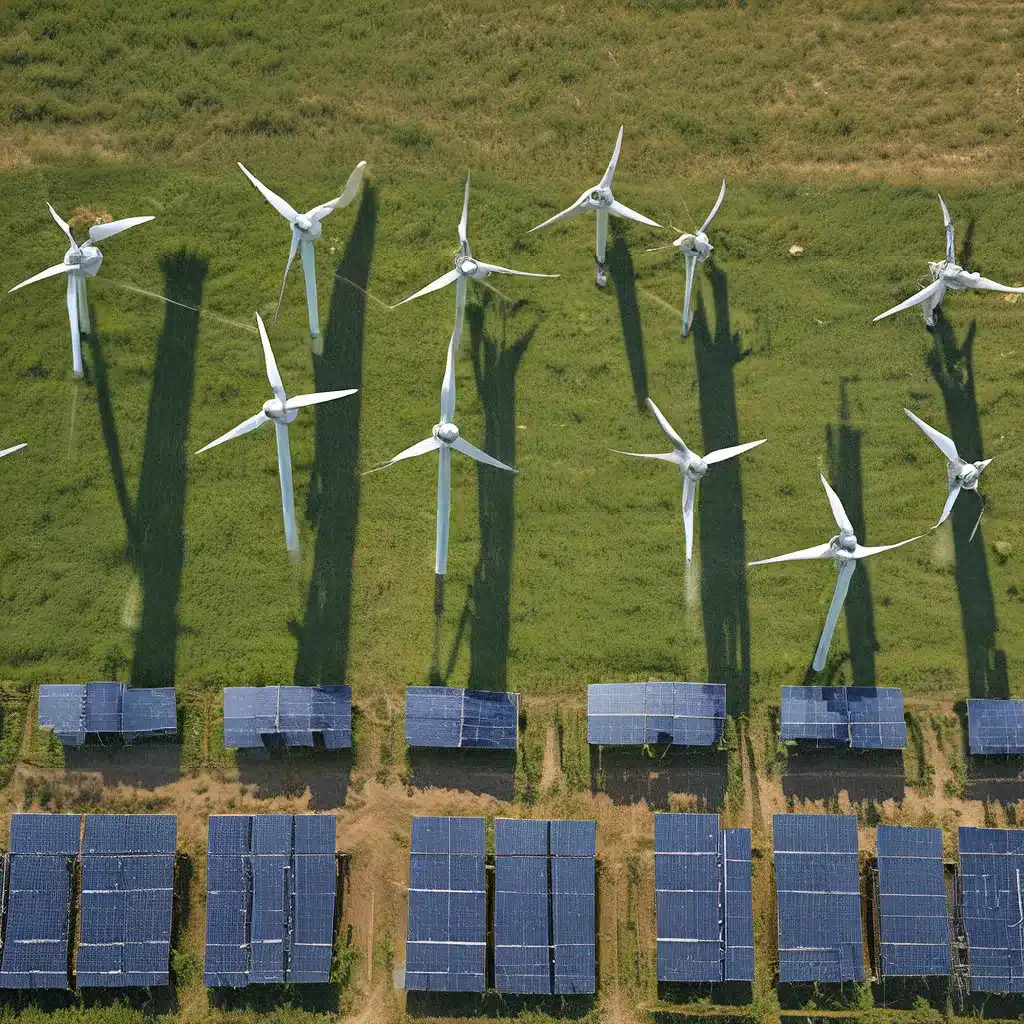
Weathering the Storm: Renewable Energy’s Role in Grid Resilience
As I gaze out the window, the skies are blanketed with dark, ominous clouds. The wind howls, and the trees sway violently. It’s the kind of weather that makes you grateful for the comfort and security of a reliable power source. But in today’s rapidly changing climate, that reliability is no longer a given.
That’s where renewable energy comes into play. According to the Center for American Progress, renewable energy is the key to building a more resilient and reliable electricity grid. As extreme weather events become more frequent and severe, traditional fossil fuel-based power plants are proving increasingly vulnerable to disruption.
But what makes renewable energy sources like solar and wind power so well-suited for grid resilience? Let’s dive in.
Decentralized and Distributed
One of the primary advantages of renewable energy is its decentralized and distributed nature. Unlike large, centralized power plants that can be crippled by a single point of failure, renewable energy systems are often smaller, modular, and scattered across a wider geographic area.
This means that if one solar farm or wind turbine goes offline, the rest of the system can continue to function and provide power. It’s a bit like having a network of smaller backup generators rather than relying on a single, massive power plant.
According to the International Energy Agency, this distributed nature of renewable energy also makes the grid more flexible and adaptable, allowing it to better withstand and recover from disruptions.
Fuel Independence and Reduced Vulnerability
Another key advantage of renewable energy sources is their fuel independence. Unlike fossil fuels, which can be subject to supply chain disruptions, price volatility, and geopolitical tensions, renewable energy resources like sunlight and wind are available locally and in abundance.
This means that renewable energy systems are less vulnerable to external shocks and disruptions. When a hurricane or winter storm knocks out power lines or damages fossil fuel infrastructure, renewable energy sources can continue to generate electricity and keep the lights on.
Resilience in the Face of Climate Change
As the effects of climate change become more pronounced, the need for a resilient power grid becomes even more critical. The Biden-Harris administration has invested $2.6 billion to support a modern, reliable, and resilient electric grid, recognizing the vital role that renewable energy plays in this effort.
Extreme weather events, such as hurricanes, wildfires, and polar vortexes, can wreak havoc on traditional power infrastructure. But renewable energy systems are often more resilient to these types of disruptions. For example, solar panels can continue to generate electricity even in the aftermath of a severe storm, while wind turbines can withstand high winds and continue to produce power.
The Grid of the Future
As we look to the future, the integration of renewable energy into the grid is not just about sustainability – it’s about ensuring the reliability and resilience of our power supply. By diversifying our energy sources and embracing the decentralized nature of renewable technology, we can create a grid that is better prepared to weather the storms of a changing climate.
And this isn’t just a theoretical concept – many communities and states are already leading the way in this transition. In California, for instance, the state’s ambitious renewable energy goals have helped to increase the resilience of its power grid, allowing it to better withstand the impacts of wildfires and other extreme weather events.
Similarly, Firewinder, a renewable energy solutions provider, is helping businesses and communities across the country to harness the power of the sun and wind to create more resilient and reliable power systems.
As I watch the storm raging outside, I can’t help but feel a sense of optimism. Because with renewable energy as the foundation, I know that our power grid can weather the storms of the future. It’s a future that is not just sustainable – but resilient.
The Challenges Ahead
Of course, the transition to a more renewable-based grid is not without its challenges. There is still ongoing research and debate around the best ways to integrate large-scale renewable energy systems into the existing infrastructure. Issues like energy storage, grid balancing, and the intermittency of some renewable sources need to be addressed.
According to the International Energy Agency, “The integration of high shares of variable renewable energy sources, such as solar photovoltaics and wind, poses significant challenges for power system operation and planning.”
But these are challenges that I believe we’re more than capable of overcoming. With continued innovation, investment, and a collaborative approach, we can build a power grid that is not just sustainable, but also resilient in the face of a changing climate.
A Future of Renewable Resilience
As the storm rages on outside, I can’t help but feel a renewed sense of purpose. Because in the face of these challenges, I know that renewable energy holds the key to a more secure and reliable power future.
It’s a future where our homes and businesses are powered by the boundless energy of the sun and the wind – a future where our grid is decentralized, distributed, and fuel-independent. A future where we can weather the storms of a changing climate with the confidence that our power will stay on, no matter what Mother Nature throws our way.
And with Firewinder and other innovative renewable energy providers leading the charge, I believe that this future is closer than we think. So let’s embrace the power of renewable resilience and build a grid that can stand strong in the face of any storm.

